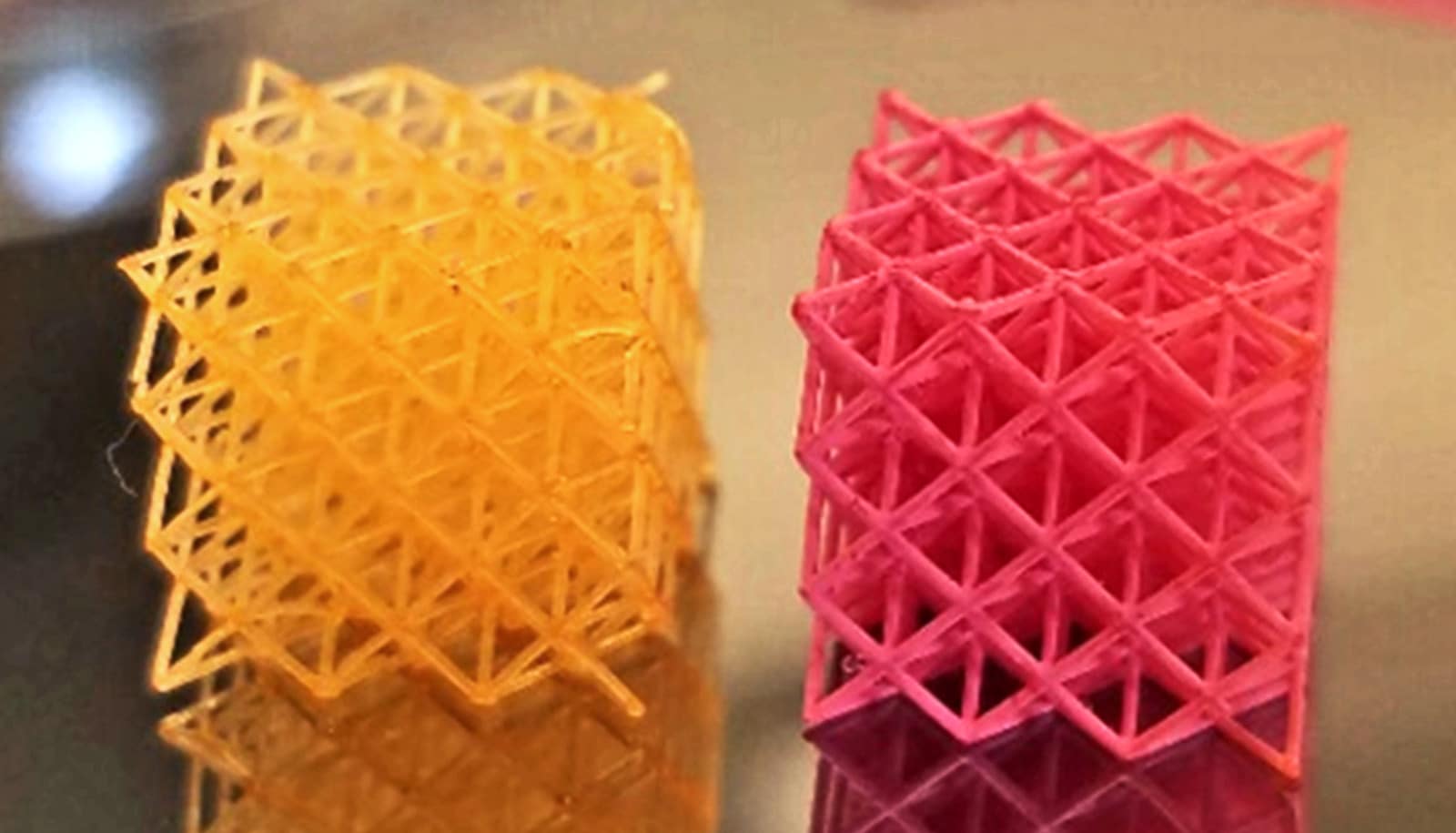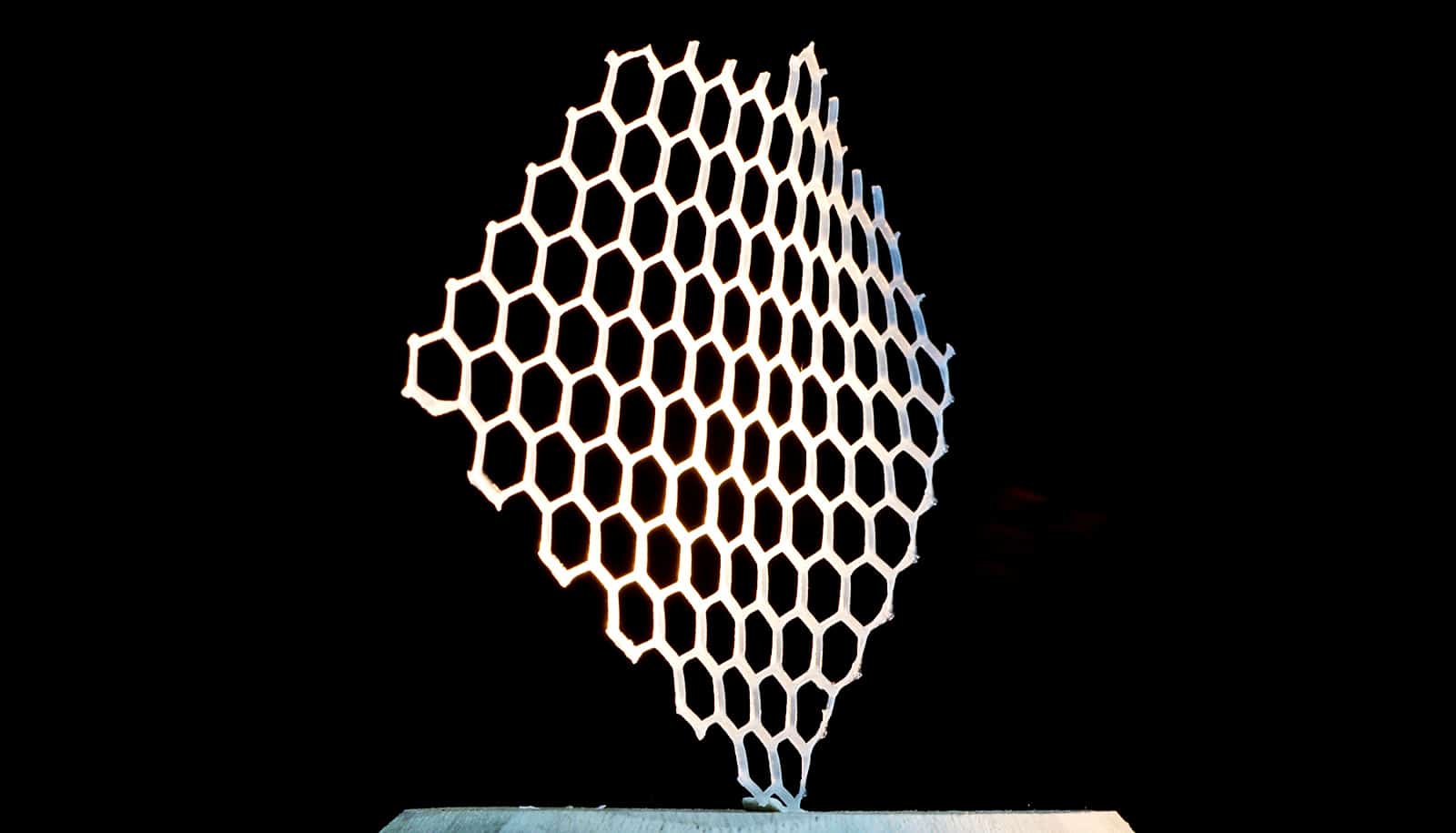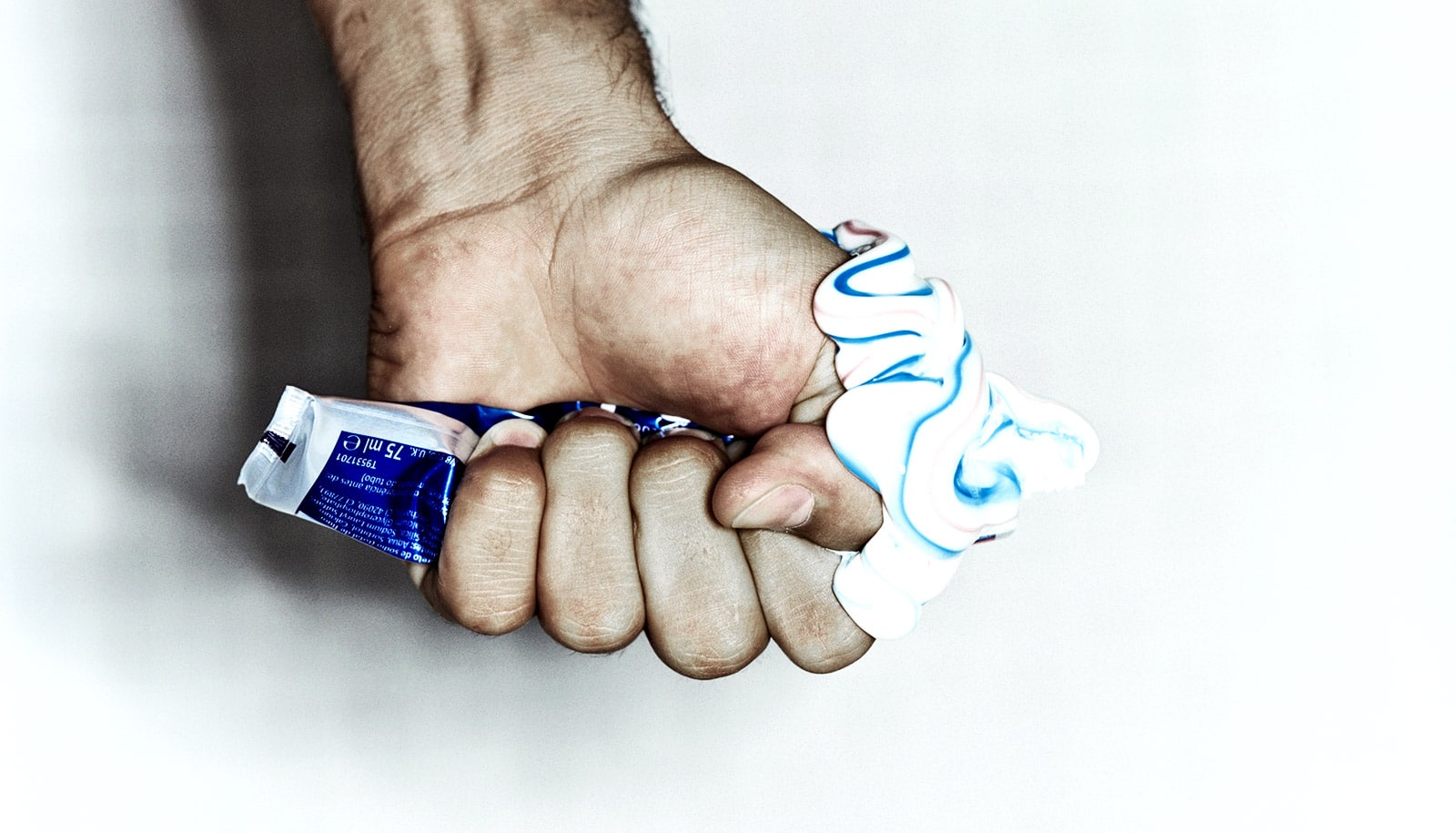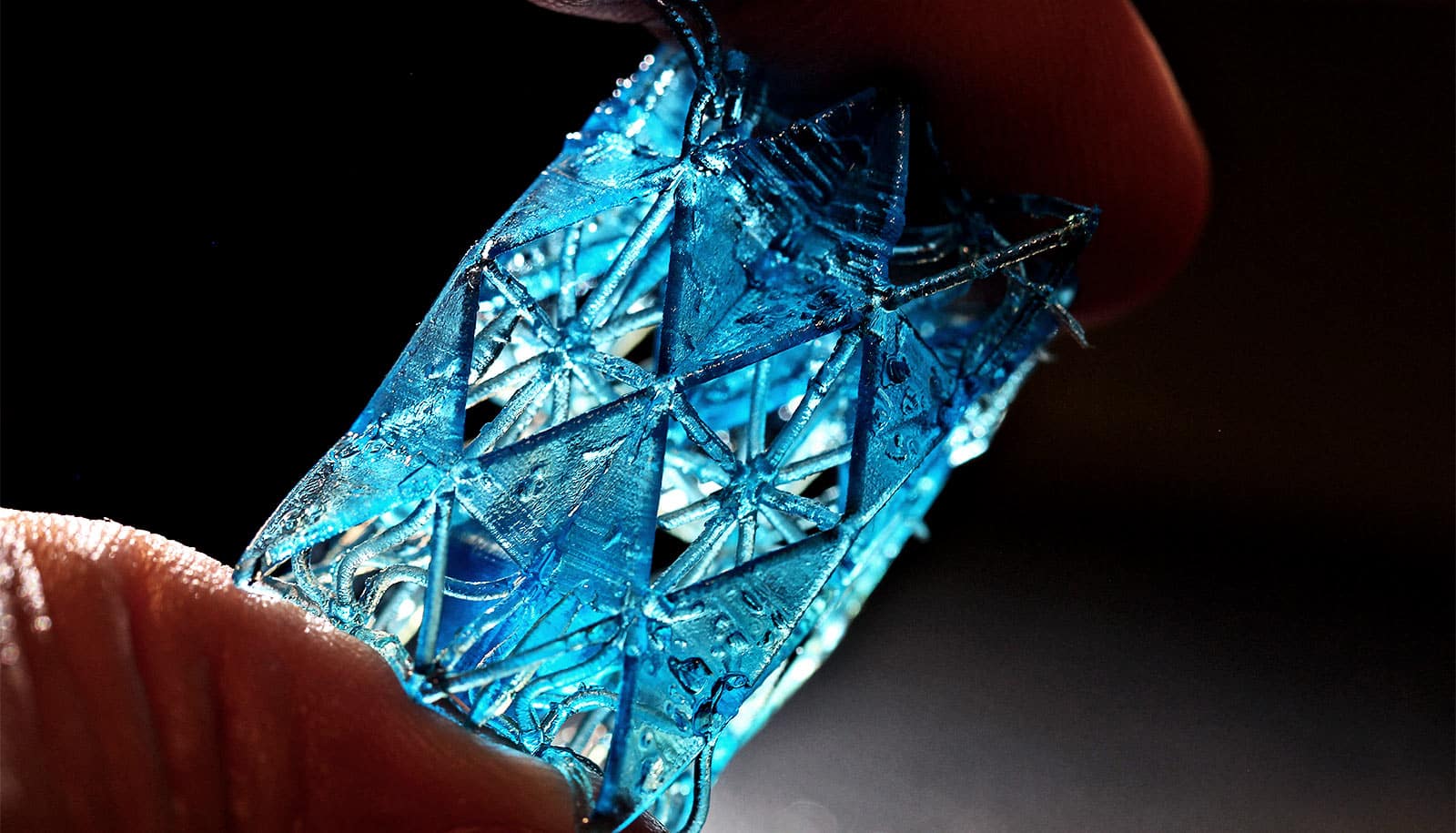Conventional sprays and brushes can’t reach all nooks and crannies in complex 3D-printed objects, but a new technique coats any exposed surface and fosters rapid prototyping, researchers report.
The method for painting complex 3D-printed objects could save manufacturers time and money and provide new opportunities to create “smart skins” for printed parts.
“Our technique is a more efficient way to coat not only conventional objects, but even hydrogel soft robots, and our coatings are robust enough to survive complete immersion in water and repeated swelling and de-swelling by humidity,” says senior author Jonathan P. Singer, an assistant professor in the mechanical and aerospace engineering department in the School of Engineering at Rutgers University-New Brunswick.
The engineers discovered new capabilities of a technology that creates a fine spray of droplets by applying a voltage to fluid flowing through a nozzle.
This technique (electrospray deposition) has been used mainly for analytical chemistry. But in recent decades, it has also been used in lab-scale demonstrations of coatings that deliver vaccines, light-absorbing layers of solar cells, and fluorescent quantum dots (tiny particles) for LED displays.
Using their approach, the researchers are building an accessory for 3D printers that will, for the first time, allow automated painting of 3D-printed objects with functional, protective, or aesthetic layers of paint.
The technique features much thinner and better-targeted paint application, using significantly fewer materials than traditional methods. That means engineers can use cutting-edge materials, such as nanoparticles and bioactive ingredients, that would otherwise be too costly in paints, according to Singer.
Next steps include creating surfaces that can change their properties or trigger chemical reactions to create paints that can sense their environment and report stimuli to onboard electronics. The engineers hope to commercialize their technique and create a new paradigm of rapid coating immediately after printing that complements 3D printing.
The findings appear in ACS Applied Materials & Interfaces. Additional researchers from Rutgers and the Massachusetts Institute of Technology contributed to the study.
Source: Rutgers University



